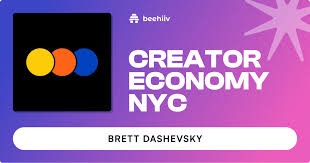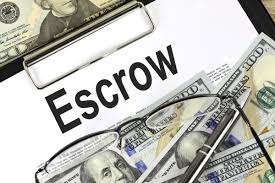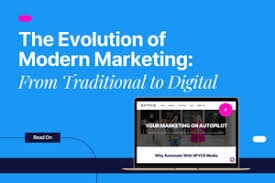The Rise of the Creator Economy and Monetization Strategies
A few years ago, if someone told you they made a living posting videos, writing online, or streaming video games, most people would raise their eyebrows. Fast-forward to today, and those same people might be pulling in six figures doing exactly that. This shift didn’t happen overnight, but it’s clear we’re in a new age—one where people earn money not by clocking in at an office, but by creating content online.
Welcome to the creator economy.
This is more than a trend. It’s a growing movement made up of everyday people who use their creativity, personality, and skills to connect with others online—and get paid doing it. From YouTubers and TikTokers to podcasters and digital artists, creators are turning hobbies into careers, one post at a time.

The Foundations of the Creator Economy
What makes this different from other online business models is the way it centers on the individual. Creators don’t just sell products—they build relationships. They might teach, entertain, inspire, or just share their daily lives. Their content becomes a bridge between themselves and their audience.
The internet gave people the power to broadcast themselves, and platforms made it easy. Add in smartphones with decent cameras and editing apps, and you’ve got everything needed to become a content creator without needing a production crew or a studio.
People aren’t waiting for permission anymore. They’re just doing it. And others are tuning in.
Why It Took Off
There’s a long list of reasons why the creator economy exploded the way it did:
- Ease of Entry: Almost anyone can start creating content today. A phone, a basic app, and an idea—that’s the starter pack.
- A Shift in Trust: People trust people more than they trust brands. And real, raw stories hit harder than polished marketing.
- Platform Support: YouTube, Instagram, TikTok, Twitch, and others have started to pay creators directly through ad shares, fund programs, and more.
- Pandemic Push: During lockdowns, a lot of people had time to try new things. Content creation was one of them. And many never stopped.
What once looked like a fun side project suddenly looked like a real career path.
Popular Ways Creators Make Money
While followers and views are important, they don’t automatically pay the bills. Monetization takes work. But here are the methods many use—and mix—to create steady income:
1. Ads and Revenue Sharing
If a platform runs ads on your content, you might get a slice of the pie. YouTube is most famous for this, but Facebook, TikTok, and Snapchat have similar setups. The catch? You need consistent traffic.
2. Sponsored Posts and Brand Deals
Brands often pay creators to promote their products. This can be incredibly profitable, especially for creators with a loyal audience. Still, it only works if the creator’s content matches the brand’s values and target market.
3. Fan Subscriptions
Platforms like Patreon allow creators to offer bonus material to fans who pay a monthly fee. Extras could include behind-the-scenes videos, Q&As, or early access to content. Even if it’s just a few bucks per person, it adds up.
4. Merch and Product Sales
Some creators design their own merchandise or sell digital goods like art prints, Lightroom presets, or online courses. Others take it a step further, launching brands or writing books.
5. Affiliate Marketing
Share a product link, and if someone buys it, the creator gets a cut. It’s a low-effort way to earn money—if the product is something the audience already wants.
6. Crowdfunding and Launching Projects
Some creators ask their audience to support a specific project—like a film, album, or new product—through crowdfunding platforms. It’s a way to get upfront money for something big.
The Flip Side: Pressure and Burnout
While this all sounds appealing, it’s not without its drawbacks. Constantly creating content can be exhausting. Many creators feel pressure to stay relevant, post often, and keep up with trends.
Algorithms can change, platforms can remove features, and audience interest can shift. Creators are often at the mercy of these unpredictable changes. That’s why many are starting to build newsletters or personal websites—places where they own the content and the connection with their audience.
And let’s not forget, a lot of creators are doing this solo. They’re not just making content—they’re managing comments, editing video, handling brand emails, and sorting out taxes.
It’s a full-time job. Sometimes, several jobs rolled into one.
What the Future Might Look Like
The creator economy isn’t just growing—it’s maturing. Platforms are developing new ways to help creators earn money and build careers. More tools are popping up to help with everything from scheduling posts to tracking income. Even traditional companies are starting to hire creators or partner with them in ways that used to only be reserved for celebrities.
It’s also becoming more diverse. You don’t need to be young, flashy, or in a big city. Creators come from all walks of life—parents, retirees, students, teachers, hobbyists. If you’ve got something people want to hear or see, you’ve got a shot.
And as creators continue learning from one another—sharing tips, lessons, and ideas—it’s only going to get better.
Wrapping It Up
Wrapping It Up
We’re in the middle of something big. The creator economy is more than just a phase—it’s reshaping how people think about work, money, and meaning. It’s turning everyday people into brands, educators, and entertainers. And it’s giving people more freedom to work on their own terms.
But it’s not a shortcut or an easy fix. It’s work. Real work. Still, for those who stick with it, adapt, and focus on building real connections—it can be one of the most rewarding paths out there.




